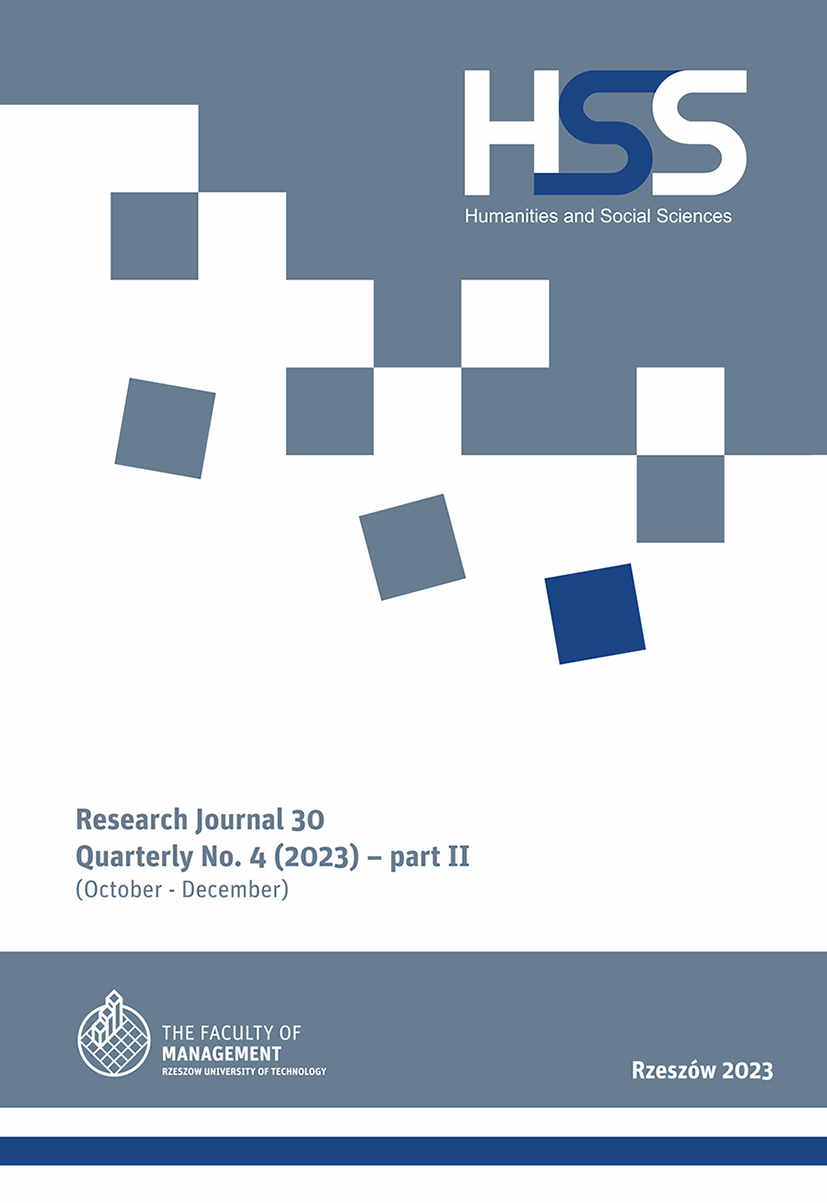Abstract
This article presents an analysis of the behavior of Polish women in the banking services market. The empirical material is the results of surveys conducted among 1217 randomly selected Polish women. Using the collected and organized empirical material, developed in a descriptive, tabular, and graphical form, through the method of comparative analysis, the article estimates Polish women’s level of interest in basic banking products, and their preferred forms of payment. It determines the level of customer satisfaction with the current banking service (the product portfolio offered, service quality, and bank employees’ approaches to serving women). In addition, it examines the attitudes of Polish women to the need to create an offer dedicated to women and a bank that would serve only women. This confirms the research hypothesis that Polish women do not see the need to create a special bank for women, but they expect more interest from banks in providing them with an offer specially dedicated to women. The results presented in the article expand the state of knowledge about the behavior of Polish women in the banking services market.
References
Baruh, L.T. (2016). Pour une histoire des femmes à la Banque impériale ottomane: de l’empire pluriethnique à l’État-nation. “Histoire, économie & société”, 4.
Canadian Women’s History [Access: 8.06.2021]. Access on the internet: http://psac-ncr.com/canadian-womens-history.
Die erste Frau, die sich bei einer Abtreibung nicht strafbar macht [Access: 8.06.2021]. Access on the internet: https://www.focus.de/wissen/mensch/geschichte/tid-21578/das-erste-mal-die-erste-frau-die-sich-bei-einer-abtreibung-nicht-strafbar-macht_aid_605622.html.
Every woman’s bank [Access: 10.04.2019]. Access on the internet: https://about.bankofamerica.com/en-us/our-story/every-womans-bank.html#fbid=1GaiiC8szPg.
Frauen in der Bank – Ein historischer Rückblick. Bank und Geschichte Historische Rundschau. Historische Gesellschaft der Deutschen Bank e. V. nr 5/2004.
Henninger, A. [red.] (1999). Ins Netz geholt: Zeit, Geld, Informationen – alles, was die Wissenschaftlerin braucht!? Hans-Böckler-Stiftung Düsseldorf.
Histoire des droits et usages bancaires des femmes (2013) [Access: 8.06.2021]. Access on the internet: https://www.culturebanque.com/banques/droit-banque-femme/.
https://www.bbva.com/en/bbva-a-history-of-banking-on-and-for-women/.
https://www.chicagotribune.com/business/ct-biz-first-womens-bank-chicago-20200731.
https://www.natwestgroup.com/heritage/subjects/women-in-banking.html.
L’émancipation financière des femmes en France: une brève histoire (2017) [Access: 10.04.2019]. Access on the internet: http://www.ladiesbank.fr/actualites-banque-finance/lemancipation-financiere-des-femmes-en-france-une-breve-histoire/ Postawy Polaków wobec obrotu bezgotówkowego [Access: 10.04.2019]. Access on the internet: http://www.nbp.pl/home.aspxf=/systemplatniczy/obrot_bezgotowkowy/obrot_bezgotowkowy.html.
Morawski, I., Wieczorek, S. (2018). Zadłużenie i bezpieczeństwo finansowe Polaków. SPOTDATA.
Raport InfoSenior (2018). Związek Banków Polskich.
https://zbp.pl/public/repozytorium/wydarzenia/.../ZBP_InfoSenior_18.01_f.pdf.
—— (2019). Związek Banków Polskich [Access: 10.04.2019]. Access on the internet: https://zbp.pl/public/repozytorium/...2019/ZBP_InfoSenior_2019_POPR_21.01.pdf.
Rocznik demograficzny (2018). Warszawa: GUS.
Sołtysiak, M. (2019), Empirical analysis of the perception of financial exclusion in Poland by women. “Nierówności Społeczne a Wzrost Gospodarczy”, nr 60 (4/2019). DOI: 10.15584/nsawg.2019.4.13.
—— (2020a), Financial Exclusion in Poland from the Male Point of View in the Light of Empirical Research. “Humanities and Social Sciences Quarterly”, Vol. XXV, Research Journal 27 (4/2020). DOI: 10.7862/rz.2020.hss.47.
—— (2020b), Seniorzy na rynku usług bankowych. „Polityki Europejskie, Finanse i Marketing”, nr 24(73). DOI: 10.22630/PEFIM.2020.24.73.39.
Sołtysiak, M., Suraj, M. (2017). Young female generation on banking services market. “Ekonomiczne Problemy Usług”, nr 127. DOI: 10.18276/epu.2017.127-24.
—— (2019), Empiryczna analiza postaw młodego pokolenia Polek wobec bankowości dla kobiet [w:] Juszczyk, S., Balina, R., red., Wybrane zagadnienia rozwoju sektora bankowego. Warszawa: Wydawnictwo SGGW.
The Little Data Book on Financial Inclusion (2018). Washington: International Bank for Reconstruction and Development/The World Bank.
Ustawa z dnia 17 marca 1921 r. – Konstytucja Rzeczypospolitej Polskiej (Dz.U. z 1921 r., nr 44, poz. 267).
Women at Royal Bank. [Access: 8.06.2021]. Access on the internet: http://www.rbc.com/history/milestones-at-a-glance/women-at-rbc.html.
Women in the Bank. Their history: 1894–2017. [Access: 10.04.2019]. Access on the internet: https://www.bankofengland.co.uk/-/.../women-in-the-bank-booklen.
Women's rights and their money: a timeline from Cleopatra to Lilly Ledbetter (2014) [Access: 8.06.2021]. Access on the internet: https://www.theguardian.com/money/us-money-blog/2014/aug/11/women-rights-money-timeline-history.
Zasobność gospodarstw domowych w Polsce. Raport z badań 2016 r. (2017). Warszawa: NBP.


